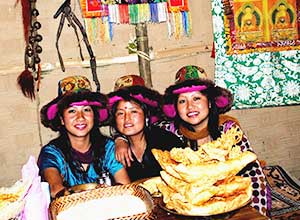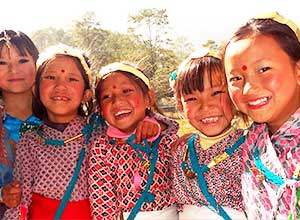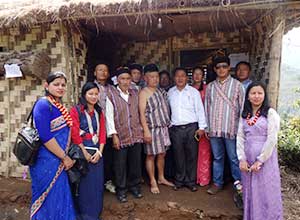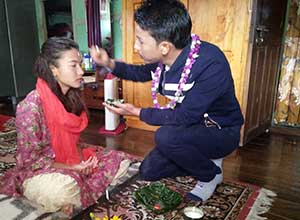Welcome To Sikkim
 Explore the Land of Peace, Tranquility, Perfect Hospitality and the Natural Museum of the World
Explore the Land of Peace, Tranquility, Perfect Hospitality and the Natural Museum of the World
Situated in the Eastern Himalayas is one of the smallest States of the Indian Union. It prides the third highest majestic Mt. Kanchendzonga which is also worshipped as the guardian deity of Sikkim. It is a paradise with Snowy Mountain, luxuriant forests, Rhododendron splendor, pristine waterfalls, sacred lakes, holy caves, holy caves, medicinal hot springs, cascading rivers, species of wild orchids, primula and gentle streams. It is a destination for all seasons. There are tours catering for everyone from those seeking solitude to the more adventurous or those seeking a leisure holiday. There are accommodation to suit every taste and budget. Sikkim has three major communities namely Nepalese, Bhutias and Lepchas as varied are they in their culture, tradition and cuisine, here you see them amalgamate in perfect harmony. Visitors can experience the true cultures and traditions at our home stays and village resorts. The drive itself is a thrilling experience along the curvaceous roads and a haven for adventure lovers as one goes trekking, rafting, angling, bird watching, mountain biking, paragliding and the mountain flights to explore the land that is truly blessed by nature. Sikkim offers an astonishing diversity of sightseeing attractions and adventure opportunities on earth. We are glad to extend our warm hospitality and hope your stay in Sikkim is a memorable one.
History of Sikkim
 The history pertaining to Sikkim before the 17th century is not well documented but it is said that somewhere in the 13th century, a prince named Guru Tashi in Tibet had a divine vision that he should go south-east to seek his fortune In Denzong “The Valley of Rice”. As directed by the divine vision he along with his family which included five sons headed towards the southeastern direction. The family during their wandering came across the Sakya Kingdom in which a monastery was being built at that time. The workers had not been successful in erecting pillars for the Monastery. The eldest son helped raise the pillars and was later come to be known as Khye-Bumsa which means the superior of all. The Sakya king then offered his daughter in marriage to Khye-Bumsa and settled in the Chumbi Valley and it was here he attained contacts with the Lepcha Chieftain TekongTek in Gangtok. The brotherhood between them helped cement brotherhood between the Lepchas and the Bhutias. Khye Bumsa was succeded by his son Mipon Rab. The forth son of Mipon Rab was Guru Tashi and it was he who shifted the family tribe towards Gangtok. Many events took place after that phase that ultimately leads towards the establishment of monarchy in Sikkim. The grandson of Guru Tashi was Phuntshok and he was conscrated as the first King of Sikkim.
The history pertaining to Sikkim before the 17th century is not well documented but it is said that somewhere in the 13th century, a prince named Guru Tashi in Tibet had a divine vision that he should go south-east to seek his fortune In Denzong “The Valley of Rice”. As directed by the divine vision he along with his family which included five sons headed towards the southeastern direction. The family during their wandering came across the Sakya Kingdom in which a monastery was being built at that time. The workers had not been successful in erecting pillars for the Monastery. The eldest son helped raise the pillars and was later come to be known as Khye-Bumsa which means the superior of all. The Sakya king then offered his daughter in marriage to Khye-Bumsa and settled in the Chumbi Valley and it was here he attained contacts with the Lepcha Chieftain TekongTek in Gangtok. The brotherhood between them helped cement brotherhood between the Lepchas and the Bhutias. Khye Bumsa was succeded by his son Mipon Rab. The forth son of Mipon Rab was Guru Tashi and it was he who shifted the family tribe towards Gangtok. Many events took place after that phase that ultimately leads towards the establishment of monarchy in Sikkim. The grandson of Guru Tashi was Phuntshok and he was conscrated as the first King of Sikkim.
Lama latsun Chempo was on a mission to establish a Buddhist Monarchy in this hidden kingdom of Denzong. He reached a place called Norbugang where he met three other Lamas Sempa Chempo and Rinzing Chempo and the place was later renamed as Yuksom, the meeting of the three Lamas. They along with Phuntsok spread Buddhism over the other Lecha tribes and Sikkim expanded borders beyond its existing reach. The first capital of the Sikkim was established in Yuksom itself. Phuntsok was succeeded by his son Tensung Namgyal in 1670, which changed the capital from Yuksom to Rabdentse.

 Namsoong or Nambun
Namsoong or Nambun The Major festivals of the Nepalese are celebrated according to the Hindu calendar but are unique in every extent in comparison to the celebration in the plains. They add joyful colors to the occasion and make the festive occasion as a grand one.
The Major festivals of the Nepalese are celebrated according to the Hindu calendar but are unique in every extent in comparison to the celebration in the plains. They add joyful colors to the occasion and make the festive occasion as a grand one.  The venue of the festivities in Buddhist occurs usually in the premises of their Monastery and Every year several festivals are celebrated across the region in full cultural glory.
The venue of the festivities in Buddhist occurs usually in the premises of their Monastery and Every year several festivals are celebrated across the region in full cultural glory. 